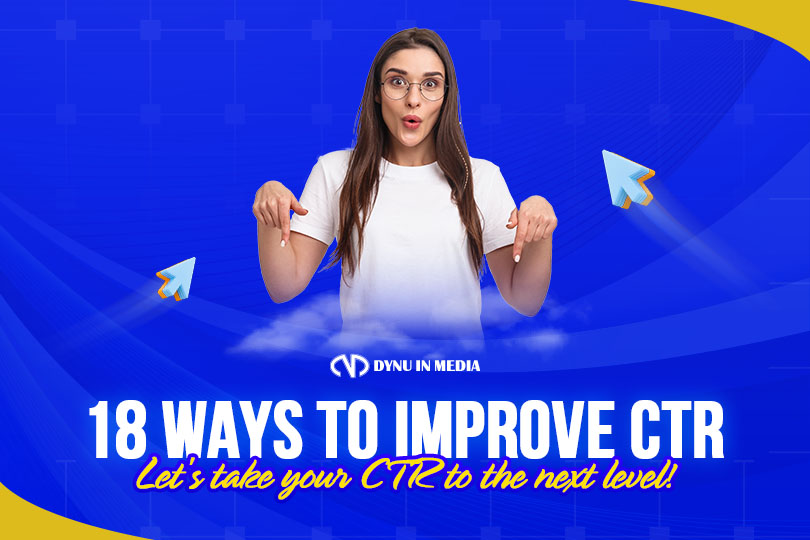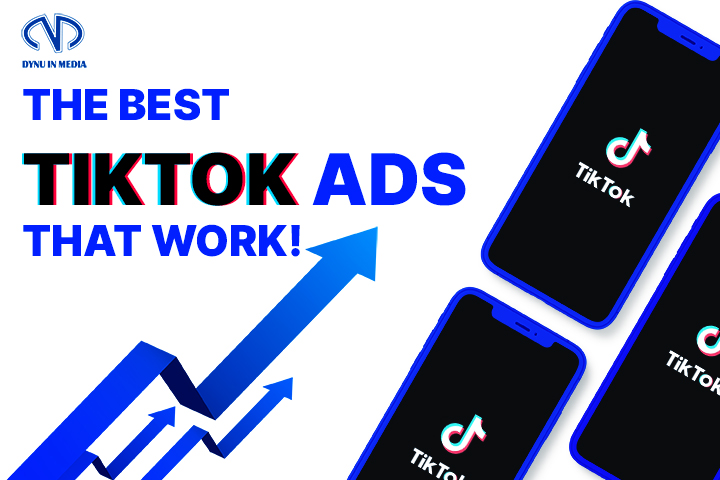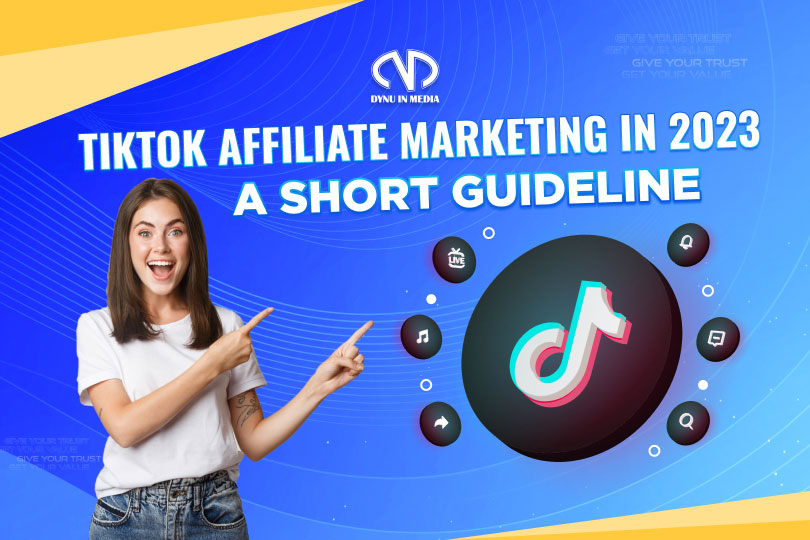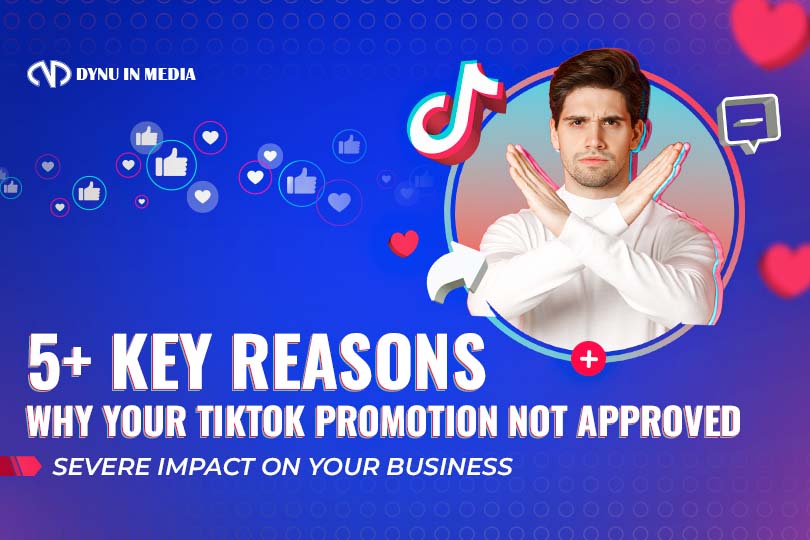9 Popular Digital Marketing Models
Have you ever wondered what exactly are digital marketing models and what are they used for? To say, these useful tools help marketers figure out their strategy, choose a market segment, predict how customers will react, and estimate how much money they will make. As an affiliate marketer, if you use one of the nine models listed below wisely, a golden opportunity to achieve success in this industry is certain.
So guys, are you ready to surf this knowledge pool? Don’t ignore this article from Dynu In Media to find the one that best suits you and your business the most!

What Is a Digital Marketing Model?
First and foremost, let’s kick off with the definition of the digital marketing model.
A digital marketing model is a framework and tool that advertisers and businesses use to assess a company’s viability and financial potential.
Digital marketing models are an important part of building a website, running an inbound marketing campaign, or running a pay-per-click (PPC) campaign. They aid in project planning and presentation and can be used to chart out the client journey.
9 Most Popular Digital Marketing Models
Here comes the 9 popular digital marketing models:

- 7 Ps of the marketing mix
- Growth-share Matrix
- USP
- RACE model
- The 4 Cs
- The Honeycomb model
- The ACCD model
- The STDC model
- PR Smith’s SOSTAC model
7 Ps Of The Marketing Mix
The first digital marketing models that we’d like to showcase you, 7Ps of the Marketing Mix.
A 7Ps marketing mix model includes product, promotion, physical evidence, people, price, place, and process. But, what is it used for?
This most popular model can be used for goal setting, SWOT analysis, and analyzing the market. Moreover, it also gives you a seven-step plan for making a good marketing plan that takes into account every step of the buyer’s journey.
With the 7Ps breakdown, you can look at every part of your business and figure out how to improve your strategy and reach your goals. In theory, a brand-new company should use a 7Ps marketing mix model to create an entire marketing strategy.
What does the 7Ps model stand for:
- Products or services should be the focus of the marketing mix. It has to answer the essential sales conversion question: what problem does the product solve for customers? Why is your product the best solution?
- Price is the cost of the product or service. When planning your product’s price, you should consider how much customers are willing to pay, the retail markup, production costs, and other things.
- Place is a location and how your product is displayed and sold (internet, warehouse, storefront).
- People: Everyone who represents your brand or interacts with customers, including chatbots, is a highly trained sales specialist who knows your product and how it will help customers.
- Promotion activities include direct marketing, advertising, and in-store promotional activities.
- Process is how you deliver your product or service to the customer. Your product delivery procedure should be efficient and reliable, but it may also contain brand-aligned elements like sustainability.
- Physical evidence proves your business exists and a purchase was made. Some examples are a business store or office, a website, printed business cards, receipts, invoices, and email newsletters to keep customers updated.

Growth-share Matrix
Growth-share Matrix is the following model that may suit your business. It is a portfolio management framework that assists corporations in determining how to prioritize the various businesses they own.
In the long run, it can help them save money, be more productive, and generate more value. Businesses that sell goods or provide services could use this tool to learn how to make more money while spending less.
To help businesses pick which initiatives to focus on, the Growth-share Matrix model was created. This modern model divides the available options into four categories.
The matrix’s symbols for the four corners are as follows:
- Stars: The growth-share matrix stars high-growth, high-market-share opportunities. The stars in the upper right quadrant represent the best investment options.
- Cows: The bottom right quadrant represents low-growth, high-market-share potential. Cows initially make a lot of money but may not be good for development.
- Question marks: The upper left quadrant has a low market share but significant growth. The question mark signifies market uncertainty.
- Pets (usual dogs): Low-growth, low-market-share opportunities are in the bottom left quadrant. A dog symbol can represent opportunities the corporation should discard or reposition.

USP (A unique selling proposition)
The next digital marketing model – unique selling proposition (USP) may separate your company from the competition!
The USP model spells out your company’s values, how you plan to differentiate yourself from competitors, and why clients should choose you. Your USP is its beating heart, and it separates you from the competition and shines a light on what makes your company special.
Focusing on what makes your company and its products stand out from the competition will help you create a strong USP. Being “unique” is not usually a viable USP on its own. Differentiating around a feature important to your audience is essential for effective messaging.
A strong USP is:
- Convincing: A unique perspective that requires you to argue against competing items is more memorable than a generic one.
- Focused on your consumers’ values: “Unique” doesn’t matter if your target customers don’t care.
- Beyond slogans: Your USP can be expressed in your return policy, supplier chain, and motto.

Before you even think about creating a website or advertising your business, you need to come up with a USP. This is because everything you need for your marketing strategy is already in your USP.
RACE model
RACE is the next model in the list of 9 popular digital marketing models. It stands for Research, Action planning, Communication, and Evaluation (having a first “Plan” step not in the abbreviation).
- Research is an essential step in the beginning phases of any form of marketing strategy. At the start of a PR plan, it’s critical to consider target audiences, demographics, what they like, how they talk to each other, and where they get their information.
- Action planning follows Research. Research creates a strategic plan to transmit the right information to the right audiences. A really strategic plan aligns the communication not only with the aims of the PR plan but also with the firm’s core values, mission, and vision.
- Communication is RACE’s third stage. This involves distributing your action plan’s content to the best media outlets. To successfully convey information, media contacts and contact lists are helpful.
- Evaluation is the final stage in the RACE model. Your PR effort should be tracked and evaluated.
The RACE model encourages you to define simple goals and arrange your digital marketing strategy into bite-sized chores. This simplification makes it easy to see the strengths and weaknesses of your approach, so you can quickly make changes and improve it. All four RACE model steps must be performed constantly and concurrently for optimal results.
RACE can be adjusted and applied to all sizes and types of B2B and B2C businesses, including small firms, startups, and bigger organizations undergoing digital transformation.
The 4 Cs
We then talk about the next model, called 4Cs.
Hmm, what does “4Cs” mean?
It consists of customer, cost, communication, and convenience. The 4C framework can help you position yourself in the market and learn more about your target audience. Furthermore, using this model can assist you in viewing your product from the customer’s point of view, which can positively affect sales.
- Customer: Value, competitive advantage, and market positioning. The 4Cs marketing method requires you to clearly define your target customer and consider reaching out to more than one group.
- Cost: Satisfaction, affordability, and value. The 4Ps Matrix considers cost from the seller’s or manufacturer’s perspective, whereas the 4Cs consider cost from the consumer’s perspective.
- Communication: Customer interaction, WIIFM (What’s in it for me?), and social media. Always tailor your communication to each target. Each group has its own way of talking.
- Convenience: Online sales, purchasing hurdles. Today’s fast-paced world values comfort. Don’t underestimate its impact on your customer’s purchase.
The 4 Cs model can help any marketing strategy in many ways. This strategy forces marketers to really get to know their audience before making a product. It also requires communication throughout the whole process, from beginning to end.
The Honeycomb model
The Honeycomb model is the next name on our list of popular marketing models to consider.
All social media marketers, users, and platforms work within the Honeycomb model, which shows the most important forces in the social media ecosystem.
It allows you to explore a certain social media topic and its importance in your strategy (which will be embedded into a larger digital strategy).
Each of its seven blocks illustrates an effective social use:
- Relationships: How much users interact.
- Groups: How organized users are.
- Conversations: the amount of user-to-user interaction.
- Reputation: How well users know others’ social standing and content.
- Sharing: Users’ information exchange, distribution, and reception.
- Presence: Users’ awareness of others’ presence.
- Identity: How much users reveal.
The ACCD model
Next, don’t forget ACCD – one of the most powerful marketing models.
ACCD is an inbound marketing term that refers to the process of converting a buyer into a customer. It stands for attract, convert, close, and delight. This generally includes emails, content, social media, and customer service techniques. These help customers move from being visitors to leads to customers to promoters.
SEO experts are familiar with this approach because it’s based on trust and competence, not a sales pitch. Inbound is the focus.
The STDC model
The See-Think-Do-Care (STDC) Model is another simple but effective way to run a business. It could completely change how you reach and engage your target audience.
It’s fascinating since it’s oriented toward the customer rather than the business. This sets it apart from other widely used models. There are four distinct groups of audience goals that are represented across the stages.
The approach can be used for all common digital marketing strategies, such as content marketing, search engine optimization (SEO), paid search advertising (PPC), social media marketing (SMM), and display advertising (DMA). It teaches you to determine which resource best suits a certain phase of the customer’s journey.
PR Smith’s SOSTAC® model
The final model we want to mention in this collection of digital marketing models is SOSTAC. SOSTAC stands for situation, objectives, strategy, tactics, action, and control. It can help you identify process flaws.
Everything you do in marketing needs the plan to help you reach your goals and boost digital growth. This will determine whether the strategy works or not and how it will affect the business’s digital growth. The SOSTAC framework is your best bet for doing all that planning.
SOSTAC’s processes—identifying existing conditions, establishing your goals, building your strategy, outlining how you’ll execute your strategy, working your plan, and assessing these actions to ensure you’re accomplishing your goals—are crucial to the development process. This blueprint can reveal flaws in your marketing plan.
Have you taken in the essentials of those nine widely-used digital marketing models? If that’s the case, give some serious thought to the matter before settling on a structure. Hope y’all learn something from this article. Drop us a line if you still have any concerns about this topic. Alright, Dynu In Media wishes you success!
Read more:









Comments are closed.